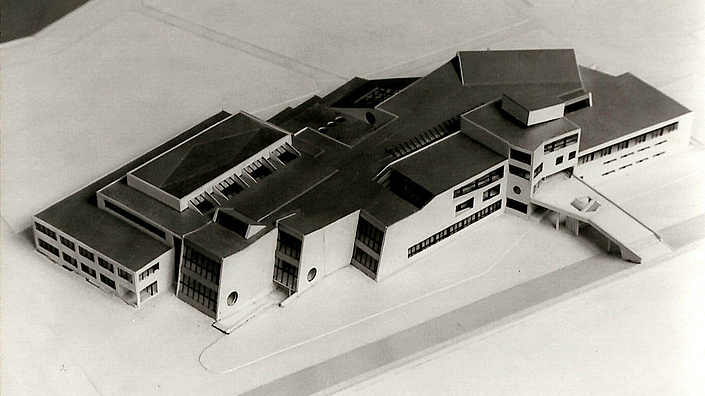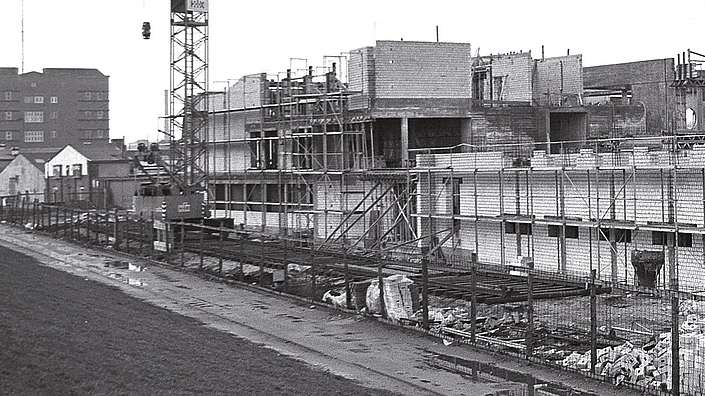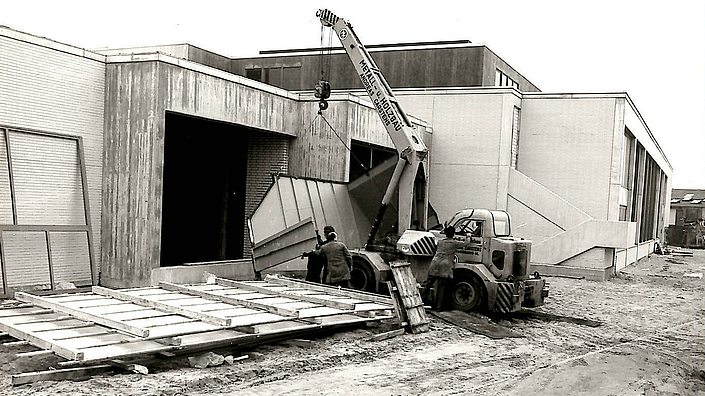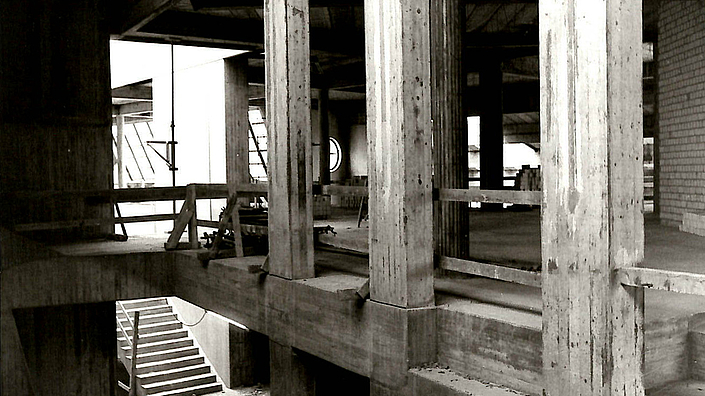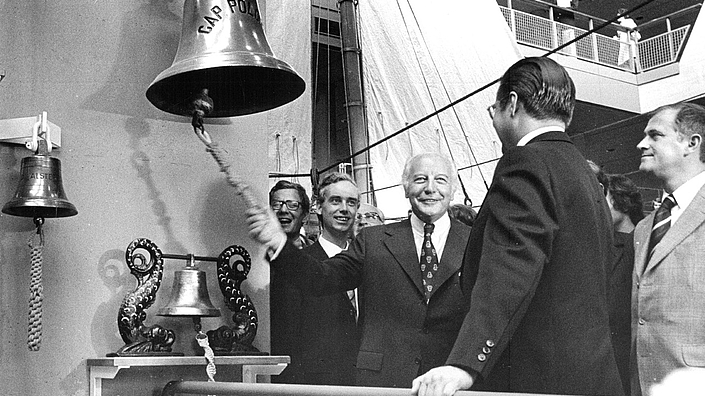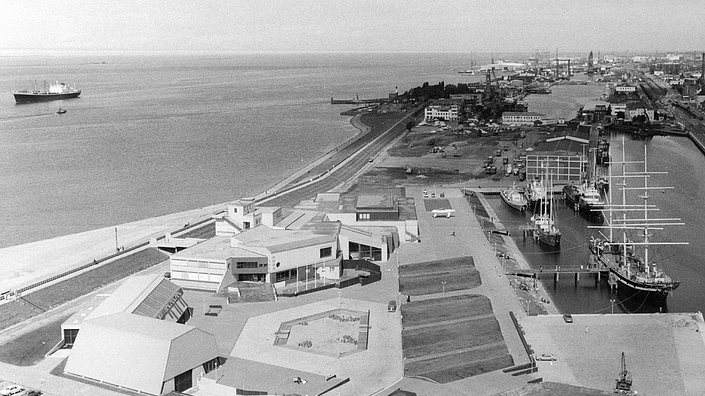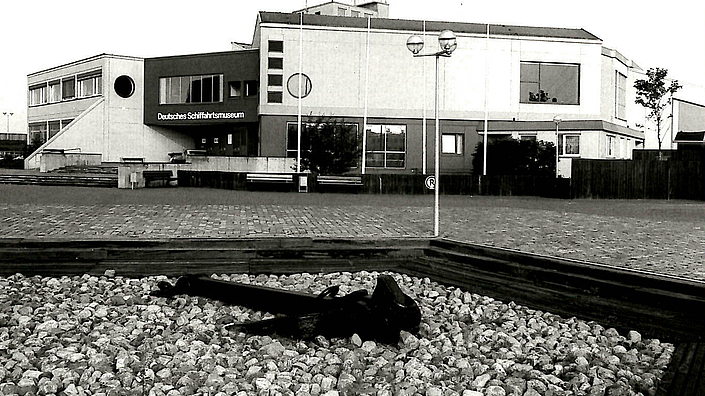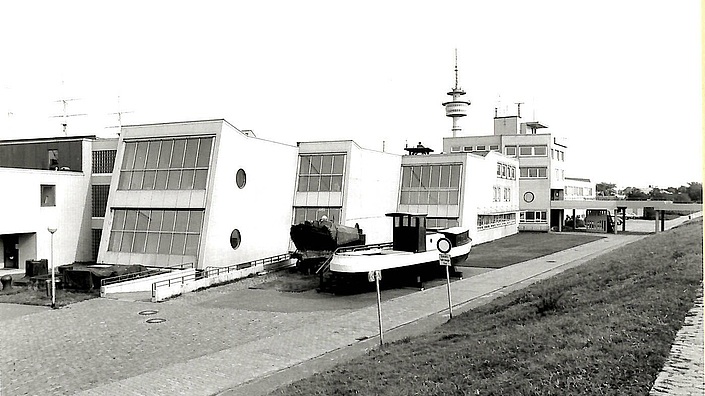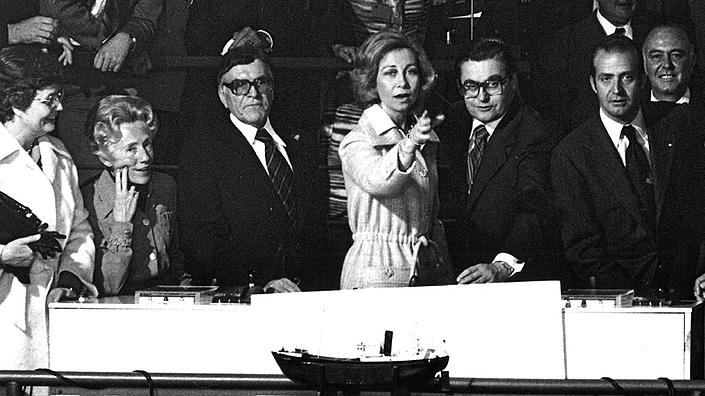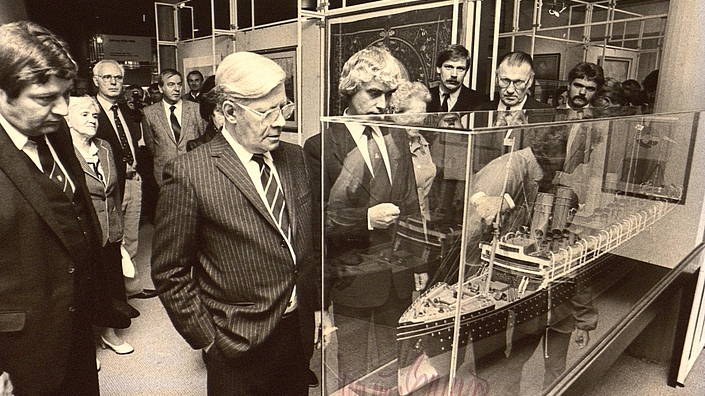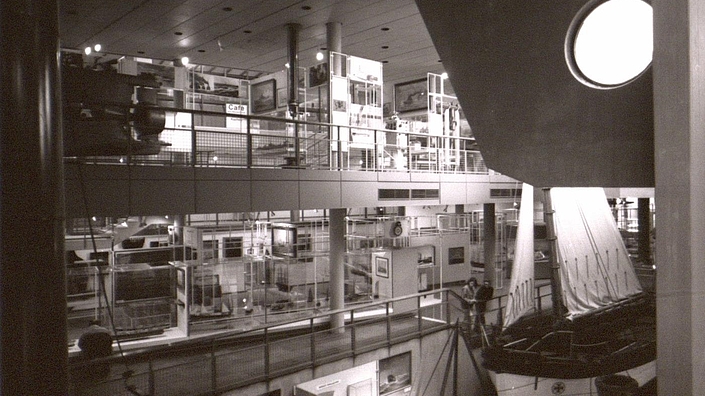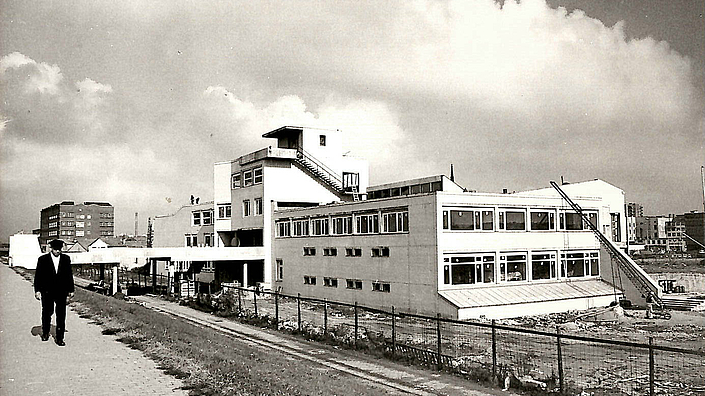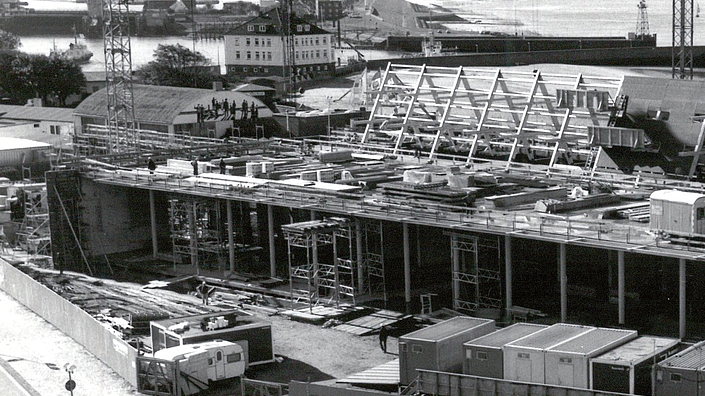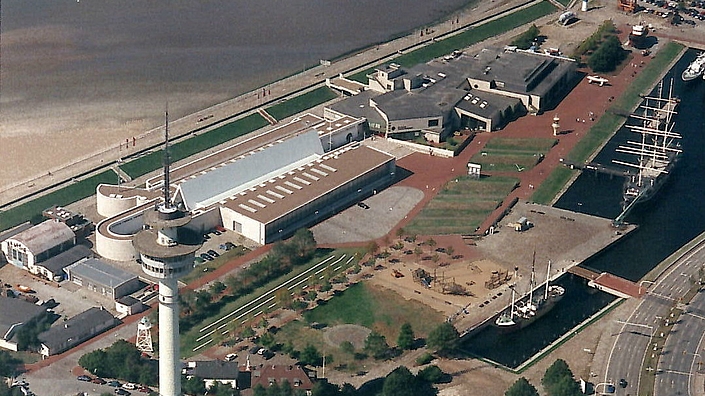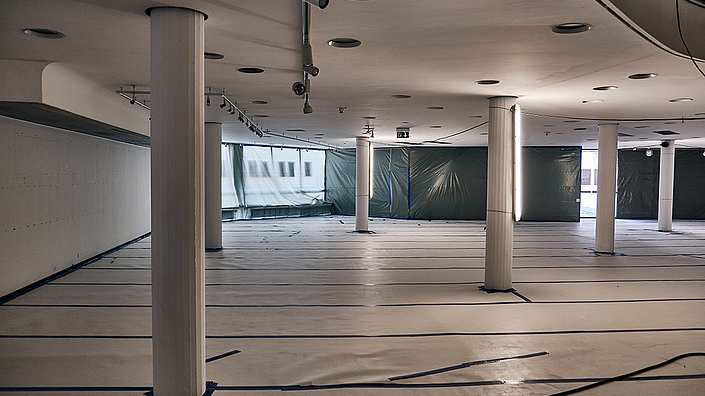Hans Scharoun's architecture for the DSM
The German Maritime Museum (DSM) / Leibniz Institute of Maritime History offers a digital service on Hans Scharoun's architecture.
The Scharoun Building of the German Maritime Museum was one of the last major projects of the architect Hans Scharoun and has been a listed building since 2005. Contributions to the architecture look at one of his last buildings from different perspectives. At the moment, the building is not open to the public and is being renovated. Podcast contributions (in german) complement the text articles and photos on the historic building, which was opened in 1975 according to the design of architect Hans Scharoun.
Scharoun, who was born in Bremen in 1893, spent his childhood and youth in Bremerhaven. He was very familiar with the surroundings when he designed it. The organic architecture of the DSM has been an integral part of the city for 45 years. Today, the clever interlocking of the existing building around the medieval cog with the extension by Scharoun's design blends into the promenade of the Havenwelten. The web special presents its history of construction and use. For the perception of the building includes not only historical but also technical and aesthetic aspects.
The great challenge of renovating such a Gesamtkunstwerk with a view to museum use ties up many forces. In addition to historic preservation, thematic, content-focused as well as financial and urban planning elements must be taken into account. "On the one hand, we are restoring the building to its original state and, on the other, creating conditions for modern museum use," says Prof. Dr. Sunhild Kleingärtner, Director of the DSM.
Historical views and selected photo contributions complement the overview of the building's architecture. They offer insights into the history of the Scharoun Building, its creation and use. Aerial photographs, interior views and details provide virtual access to a monument that cannot currently be visited. The historical potential of the building becomes visible and gives anticipation for a reopening of the Scharoun Building.
History of the Scharoun Building in pictures
-Fun Facts
-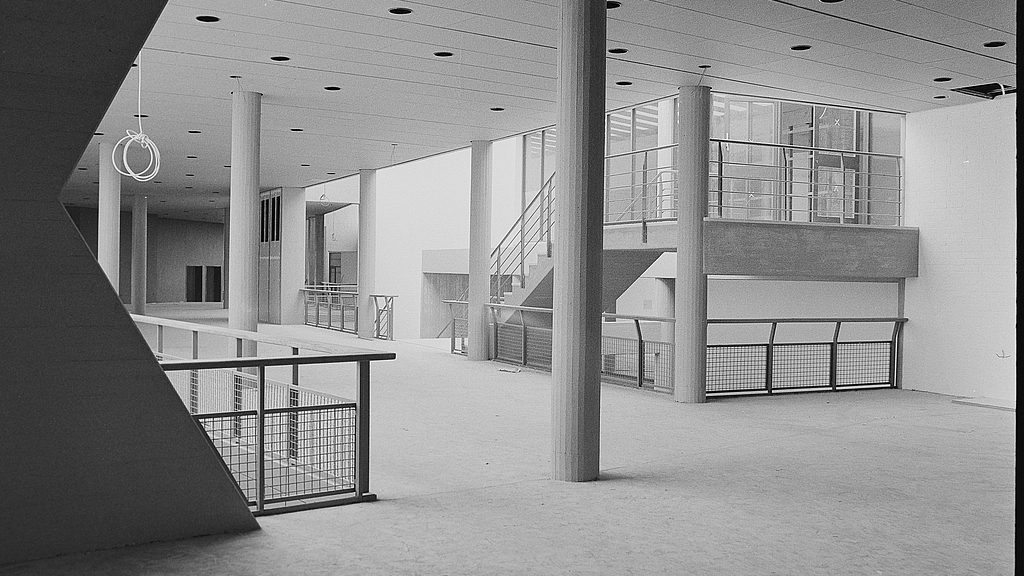
Facts, figures & interesting facts about the Scharoun Building
Hans Scharoun's late work with its organic architecture offers many surprising and unexpected things. Here we have compiled information on the building and its history, ranging from the interesting to the trivial.
